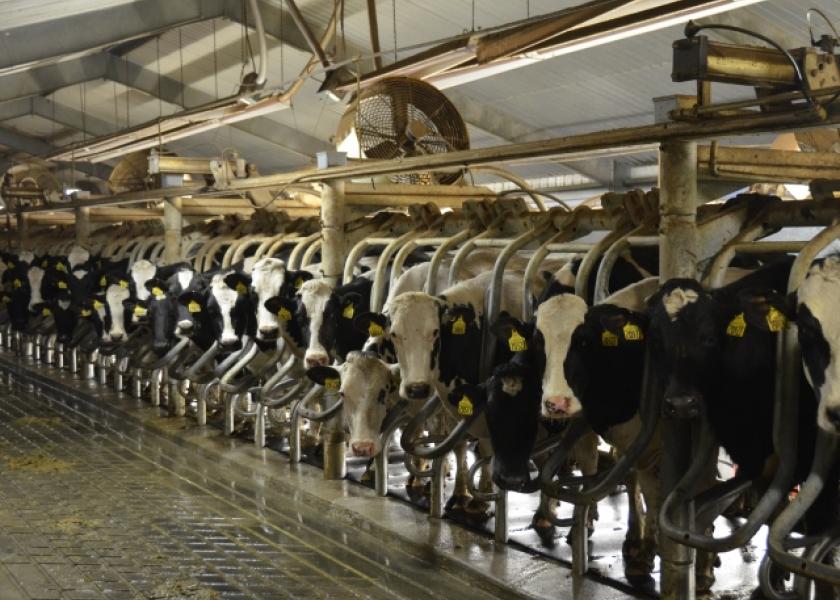White Swan Events Not Quite Enough to Swing Milk Markets from Surplus to Shortage

The March 2023 USDA Milk Production report showed a 0.5% increase in year-over-year milk production. Cow numbers also showed an increase of 31,000 head over last year, but production per cow only gained 3 lbs.
Mike North, president of Ever.Ag, told AgriTalk’s host Chip Flory that while there is currently a slight increase in cow numbers and milk production growth, the spring flush will start to slow down.
“Things are definitely slowing down and for obvious reasons,” North says. “The costs are high, but prices have softened.”
The production report shows California down 2% and North states the next USDA report will reflect more softening to production in the Golden State. Factor in South Fork Dairy’s catastrophic loss of 18,000 cows earlier this month that represent nearly 1.8% of Texas milk production and North says those cow numbers will also retract.
“That will tighten things up as we come up the backside of the spring flush,” he says.
Although even when you combine the Texas fire, California flooding and the increase in cow slaughter, milk prices still won’t see much of an increase.
“Not quite yet simply because we are in a major milk surplus environment right now,” North explains. “These disruptions have helped to lessen the impact of a very surplus environment, but it has not swung us from surplus to shortage.”
Cow Numbers
U.S. cow numbers were up 6,000 head over February 2023, although significantly less than February’s 22,000 gain over January. The total production along with changes in production and cows for the top six states follows.
| State | Production | % Change | Pounds | Cows |
| California | 3.642 billion | -2% | -75 million lbs. | 1,000 |
| Wisconsin | 2.735 billion | 0.4% | 11 million lbs. | -4,000 |
| Texas | 1.505 billion | 4.7% | 68 million lbs. | 17,000 |
| Idaho | 1.440 billion | 3.1% | 43 million lbs. | 15,000 |
| New York | 1.361 billion | 2.1% | 28 million lbs. | 10,000 |
| Michigan | 1.035 billion | 2.9% | 29 million lbs. | 8,000 |
South Dakota’s impressive growth continues, adding another 13,000 cows and 24 million lbs. over last March.
To listen to the full segment with Mike North and Chip Flory, click on AgriTalk-PM-4-19-23-Mike North - AgriTalk PM - Omny.fm







